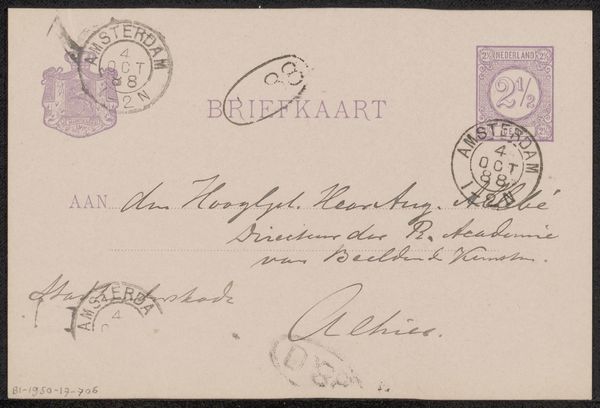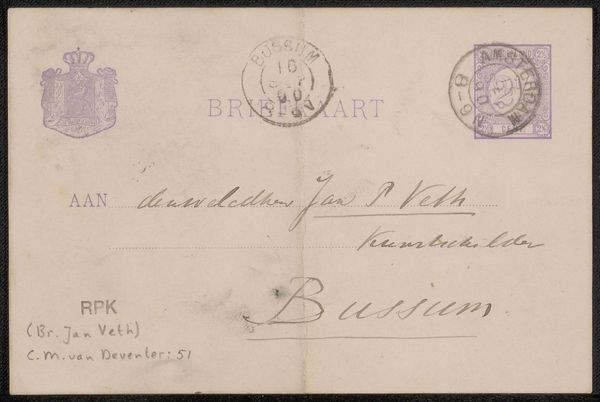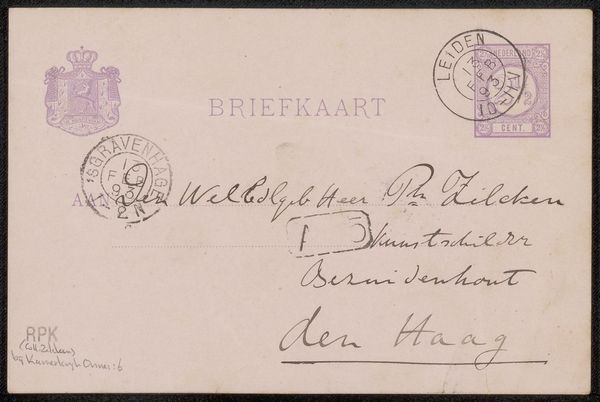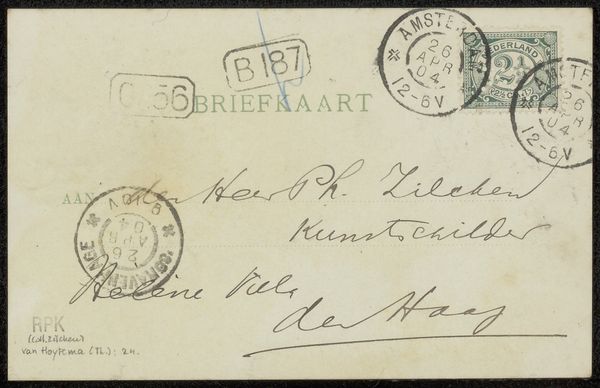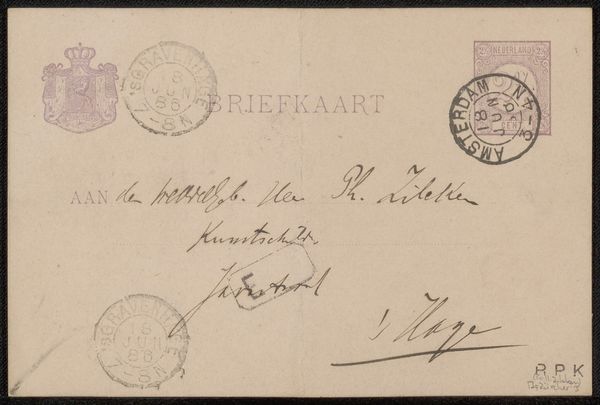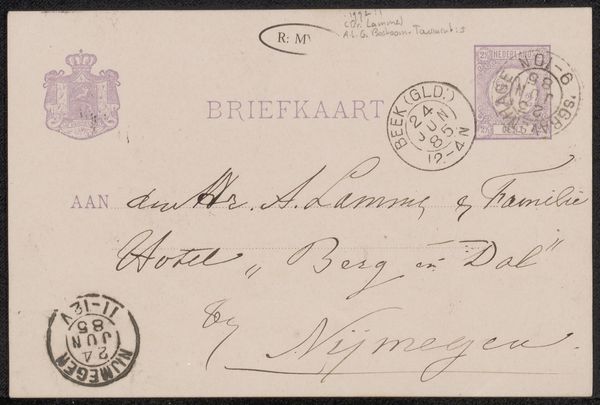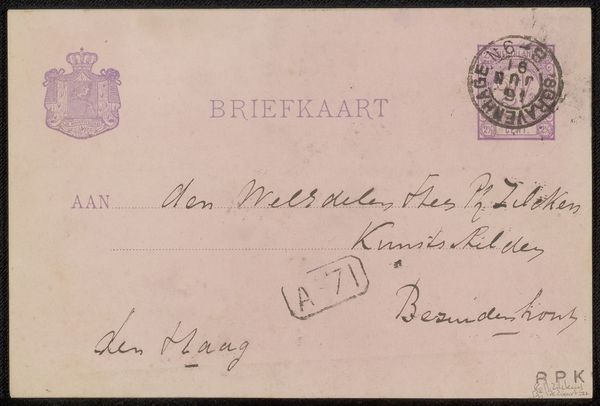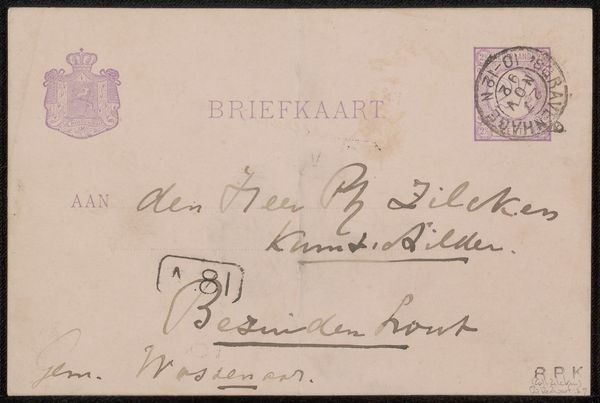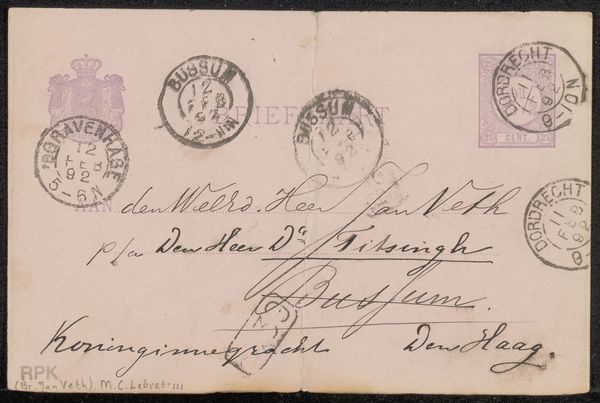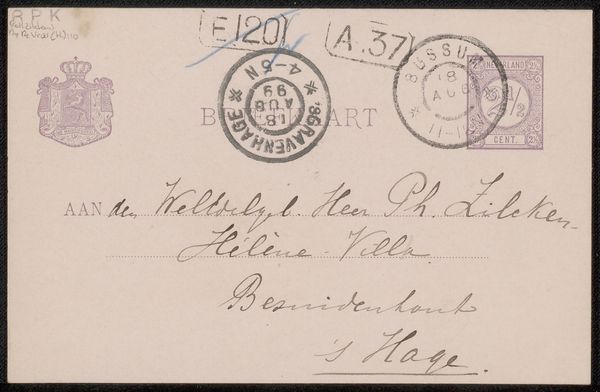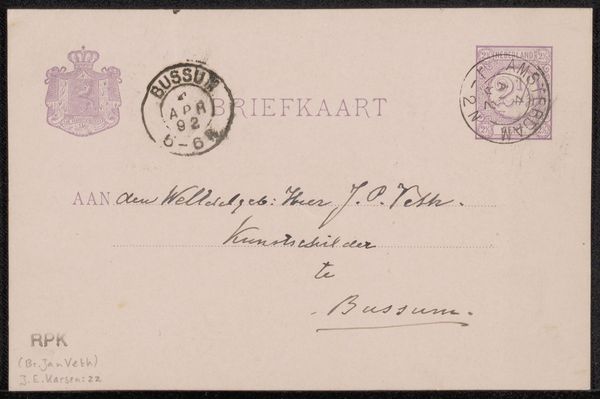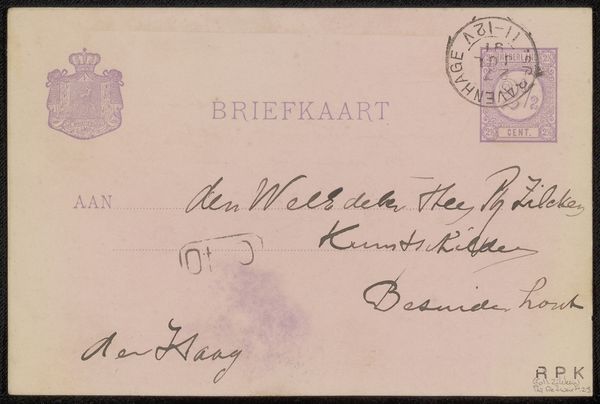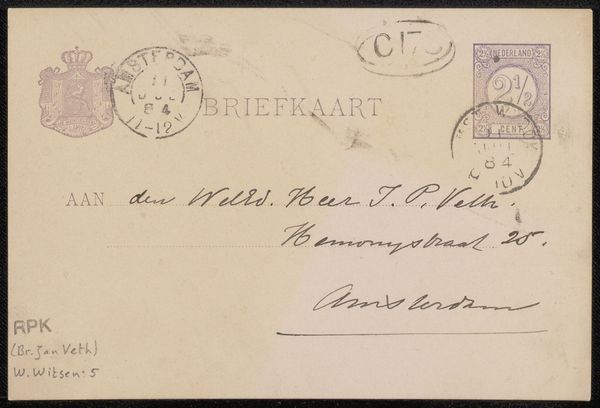
drawing, graphic-art, print, paper
#
drawing
#
graphic-art
# print
#
paper
#
calligraphy
Copyright: Rijks Museum: Open Domain
Curator: Here we have “Briefkaart aan Jan Veth,” a graphic work by Jac van Looij dating from before 1898. It’s primarily done with drawing and print on paper. What catches your eye? Editor: It's intimate. The delicate script, the faded postal markings… It feels like a whisper across time. Makes me think of quiet mornings and the importance of the handwritten note, something so different from our instant communications today. Curator: Indeed. The material itself—a simple paper postcard—speaks volumes about communication practices of the time. We see here not just an artwork, but a functional object embedded within a social network. Consider the postal system as the primary channel for disseminating both personal and commercial information. Editor: Right, but let's talk about the handwriting! There’s a rhythm in the letterforms. It feels almost performative, a visual dance. I imagine van Looij carefully choosing each stroke, almost like a painter layering brushstrokes on a canvas. What do you think about that aspect? Curator: Precisely. This challenges the separation of art from craft. The deliberate act of beautiful handwriting elevates the humble postcard into a considered art form, demonstrating skilled labor. Editor: I find it moving that such a fleeting message—"Kunstschilder Busjum bij Naarden"— was deemed important enough to save. The fact that it made its way here, to us, centuries later is very moving. What kind of insights does it reveal about artistic and intellectual circles of the era, this form of "small talk" on paper? Curator: The address itself points to a nexus of artistic exchange and influence. Understanding the dynamics between Jan Veth, an important art critic and artist himself, and Jac van Looij as mediated through something as quotidian as a postcard gives valuable insights. Editor: Yes! To think that every stamp, every stroke of ink carries with it stories, human connections…it encourages one to reflect about ourselves now. Curator: Indeed, by analyzing this work through the lens of its production and consumption, we uncover complex networks of social relations. It pushes beyond mere aesthetic appreciation and towards a deeper historical and cultural understanding. Editor: Right, which makes one pause and reflect...art exists not in a vacuum, but as a living, breathing testament to humanity.
Comments
No comments
Be the first to comment and join the conversation on the ultimate creative platform.
